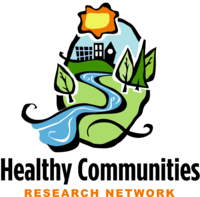How are public spaces being animated to improve our sense of place?
In the current age of austerity, public investment in public spaces is often viewed as a luxury. Accordingly, experimenting with short-term, temporary improvements or programming that “animate” public spaces offers exceptional flexibility and serves as a persistent and ongoing means of transforming or altering landscapes and staging urban life inexpensively. For this reason, they warrant examination for their placemaking potential.
Animating public space refers to “the deliberate, usually temporary, employment of festivals, events, programmed activities, or pop-up leisure to transform, enliven, and/or alter public spaces and stage urban life” (Glover, in press, p. 1). Examples of animating public space include, but are not limited to, interactive art installations, street furniture, pop-up markets, food trucks, ice rinks, yarn bombing, book trading posts (aka Little Free Library), public yoga classes, and musical performances.
By supporting such initiatives, cities reshape public spaces into “exciting laboratories that reward citizens with authentic places” (Project for Public Spaces, 2012, p. 15). The positive activity and perception of vitality associated with animation draws positive attention to public spaces and catalyzes communities around common goals. In this sense, animation serves as a form of transformative placemaking by emphasizing the creation of presumably positive change for people and communities and (re)shaping, (re)territorializing, and (re)making public space.
As a transformative placemaking initiative, the animation of public space aims to enhance sense of place—the socio-cultural meanings and attachments held by an individual or group for a spatial setting. In other words, animation involves interpreting, narrating, and imagining place, thereby inscribing a place with meaning and value. In this sense, the animation of public space recognizes, legitimizes, and values various perspectives on what it means to live in a city, a neighbourhood, and/or a community. How a public space is animated, therefore, enables rich understandings of people’s values and attachments.
The purpose of this study is to (1) explore the placemaking process of animating public spaces and its implications for fostering place meanings. More specifically, the objectives of the proposed project are to:
- Examine the breadth and scope of initiatives used in contemporary urban settings to animate public spaces with the intent to expand understanding, provide greater conceptual clarity, and refine existing definitions,
- Understand in what ways such initiatives—their processes and implementation—influence place meanings,
- Explore who stands to gain from these initiatives and understand how their “aesthetics” can advance inclusion and/or camouflage power and conflict, and
- Identify best practices to advance inclusive “animation” praxis and innovations in public space management, maximize the impact of the resultant research, and communicate those impacts as widely as possible to create value for city officials, public space professionals, and civic leaders.
Additional reading:
Glover, T. D. (in press). Animating Public Space. In S. Elkington, & S. Gammon (eds.), Landscapes in leisure: Space, place, and identities. London: Palgrave Macmillan.
Silverberg, S., Lorah, K., Disbrow, R., & Muessig, A. (2013). Places in the making: How placemaking builds places and communities. Cambridge, MA: Massachusetts Institute of Technology.
